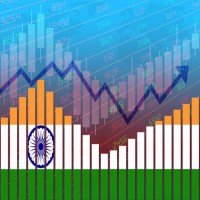The period before and after 2014 in India represents a significant juncture in economic policy, governance, and development. Here’s an overview of the Indian economy before and after 2014:
Indian Economy Before 2014:
- Economic Growth:
- Before 2014, India experienced a period of relatively high economic growth, averaging around 7-8% GDP growth annually.
- Global Financial Crisis Impact:
- The global financial crisis in 2008 had some impact on the Indian economy, leading to a temporary slowdown.
- Inflation:
- Inflation, especially in food and fuel prices, was a concern during certain periods.
- Fiscal Deficit:
- There were challenges in managing fiscal deficits, with concerns about the sustainability of government expenditure.
- Current Account Deficit (CAD):
- The current account deficit was a matter of concern, and there were fluctuations in the balance of payments.
- Corruption Scandals:
- The UPA government faced corruption allegations related to high-profile scandals like the 2G spectrum and coal allocation.
- Policy Paralysis:
- There were criticisms of policy paralysis, with challenges in decision-making and implementation.
- Structural Reforms:
- Progress in implementing structural reforms was relatively slow, impacting sectors like taxation and labor.
Indian Economy After 2014:
- Economic Reforms:
- The government led by Prime Minister Narendra Modi initiated economic reforms, including the Goods and Services Tax (GST) and demonetization.
- GST Implementation:
- The introduction of GST aimed to streamline taxation, reduce tax evasion, and create a unified market.
- Demonetization:
- In 2016, the government demonetized high-denomination currency notes to curb black money and promote digital transactions.
- Infrastructure Development:
- There was a renewed focus on infrastructure development, with significant projects in roads, railways, and urban development.
- Ease of Doing Business:
- The government aimed to improve the ease of doing business, resulting in an improved ranking in global indices.
- Direct Benefit Transfer (DBT):
- The expansion of DBT aimed to directly transfer subsidies and benefits to the intended beneficiaries, reducing leakages.
- Foreign Direct Investment (FDI):
- Efforts were made to attract foreign direct investment across various sectors.
- Financial Inclusion:
- Initiatives like Jan Dhan Yojana aimed to promote financial inclusion by providing bank accounts to the unbanked.
- Goods and Services Tax (GST) Council:
- The GST Council was established to address issues and challenges related to the implementation of GST.
- Insolvency and Bankruptcy Code (IBC):
- The introduction of the IBC aimed to address issues related to corporate insolvency and bankruptcy.
- Focus on Digital India:
- The Digital India initiative aimed to promote digital literacy and technology adoption.
- Social Welfare Programs:
- Various social welfare programs, such as Ayushman Bharat, were introduced to address healthcare challenges.
- National Infrastructure Pipeline (NIP):
- The NIP was launched to boost infrastructure investment in key sectors.
- Renewed Emphasis on Manufacturing:
- Initiatives like “Make in India” aimed to promote manufacturing and job creation.
- COVID-19 Response:
- The government implemented measures to address the economic impact of the COVID-19 pandemic, including relief packages and reforms.
Challenges and Continuities:
- Unemployment:
- Both periods saw challenges related to unemployment, with the issue persisting.
- Agricultural Distress:
- Agricultural distress, including farmer protests, has been a challenge that spans both periods.
- Global Economic Factors:
- Both periods were influenced by global economic factors, including the global financial crisis and the COVID-19 pandemic.
- Structural Reforms:
- The need for comprehensive structural reforms, including labor and land reforms, remains a priority.
- Inclusive Growth:
- Achieving inclusive and sustainable economic growth continues to be a goal for policymakers.

Netaji Subhas Chandra Bose Jayanti: Inspirational prices through Netaji on Parakram Diwas 2024. - Digital AniViPractice
[…] Indian Army of Liberation can satisfactorily be constructed on undiluted nationalism, top-notch justice, […]